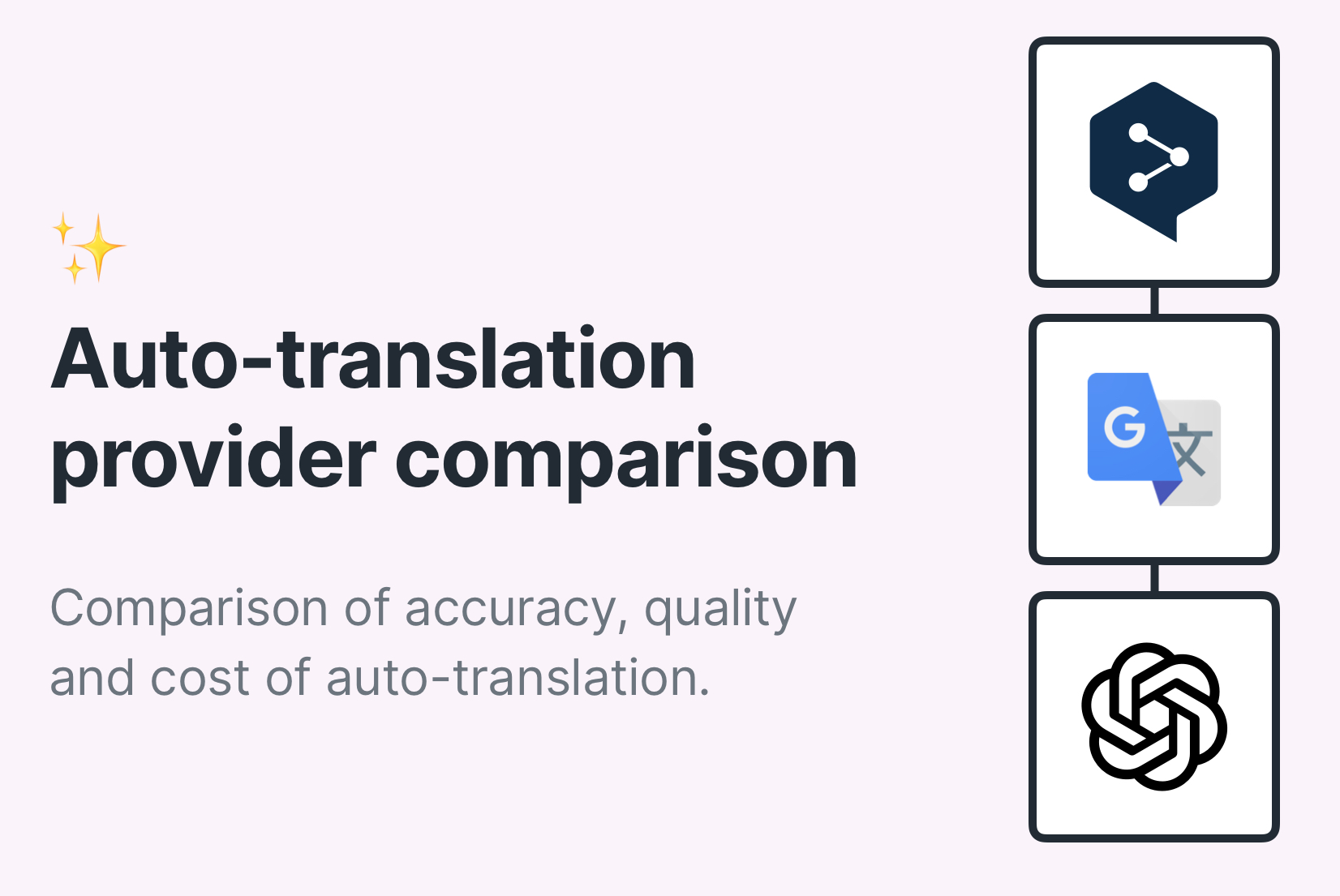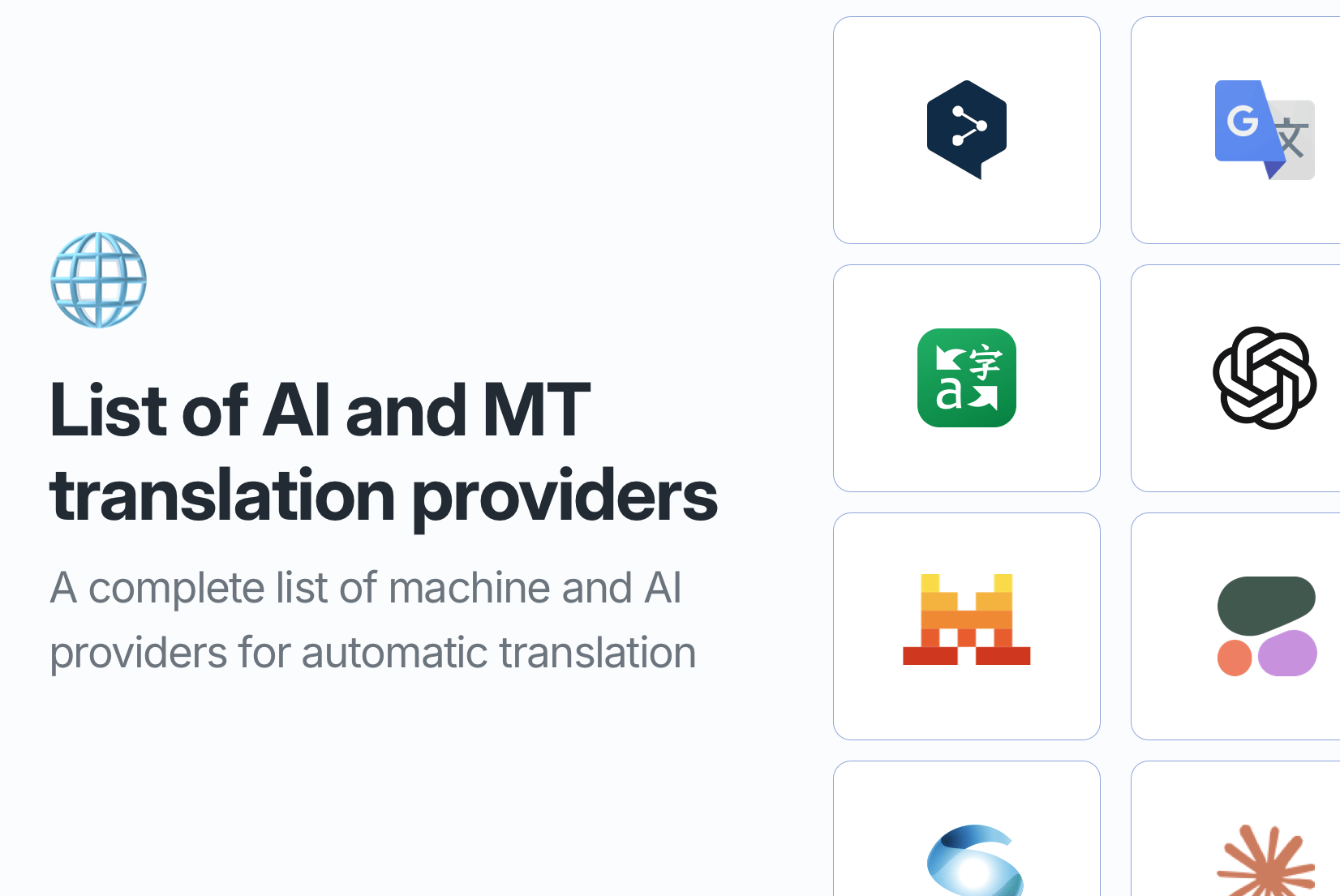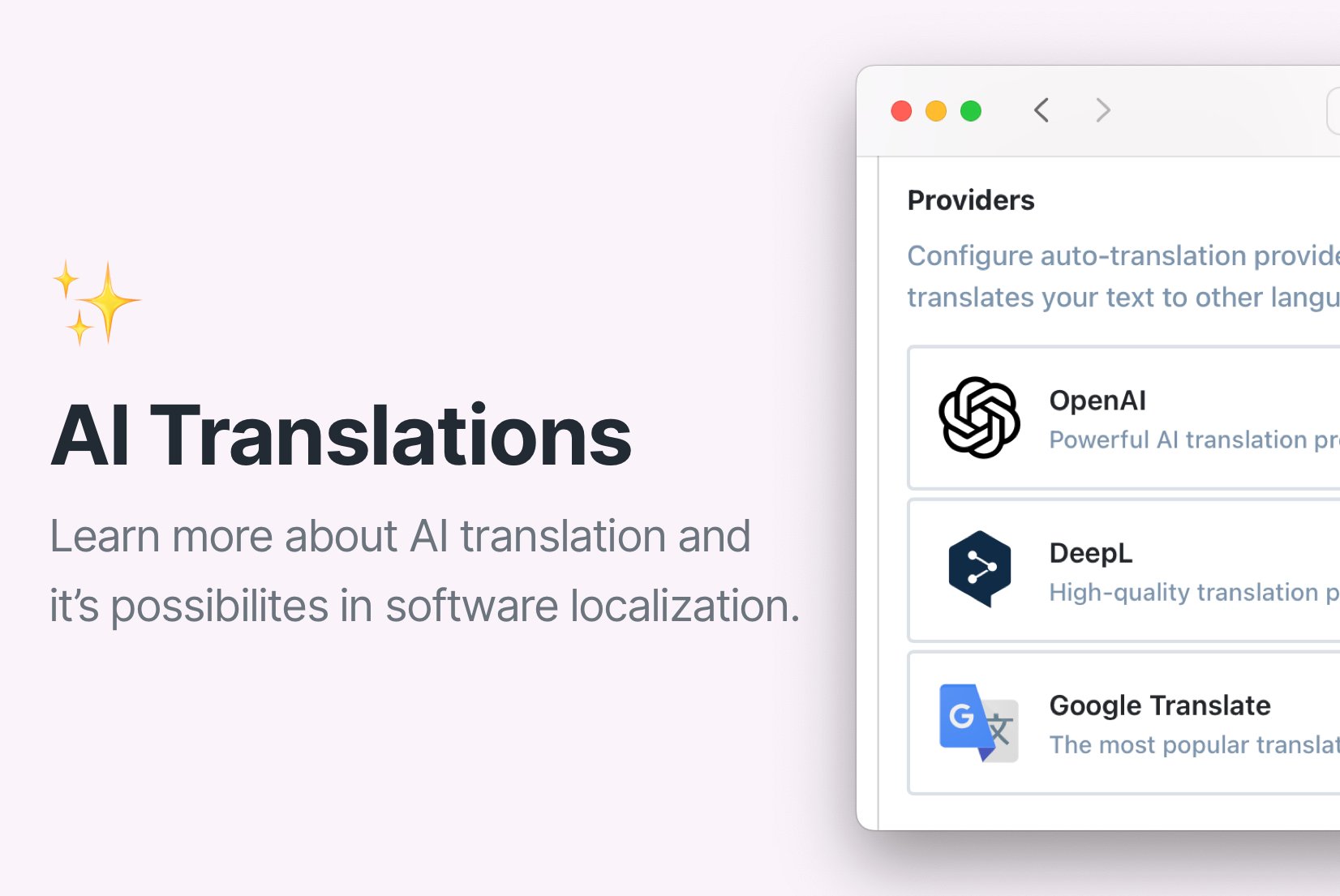ChatGPT and DeepL translation context in auto-translation
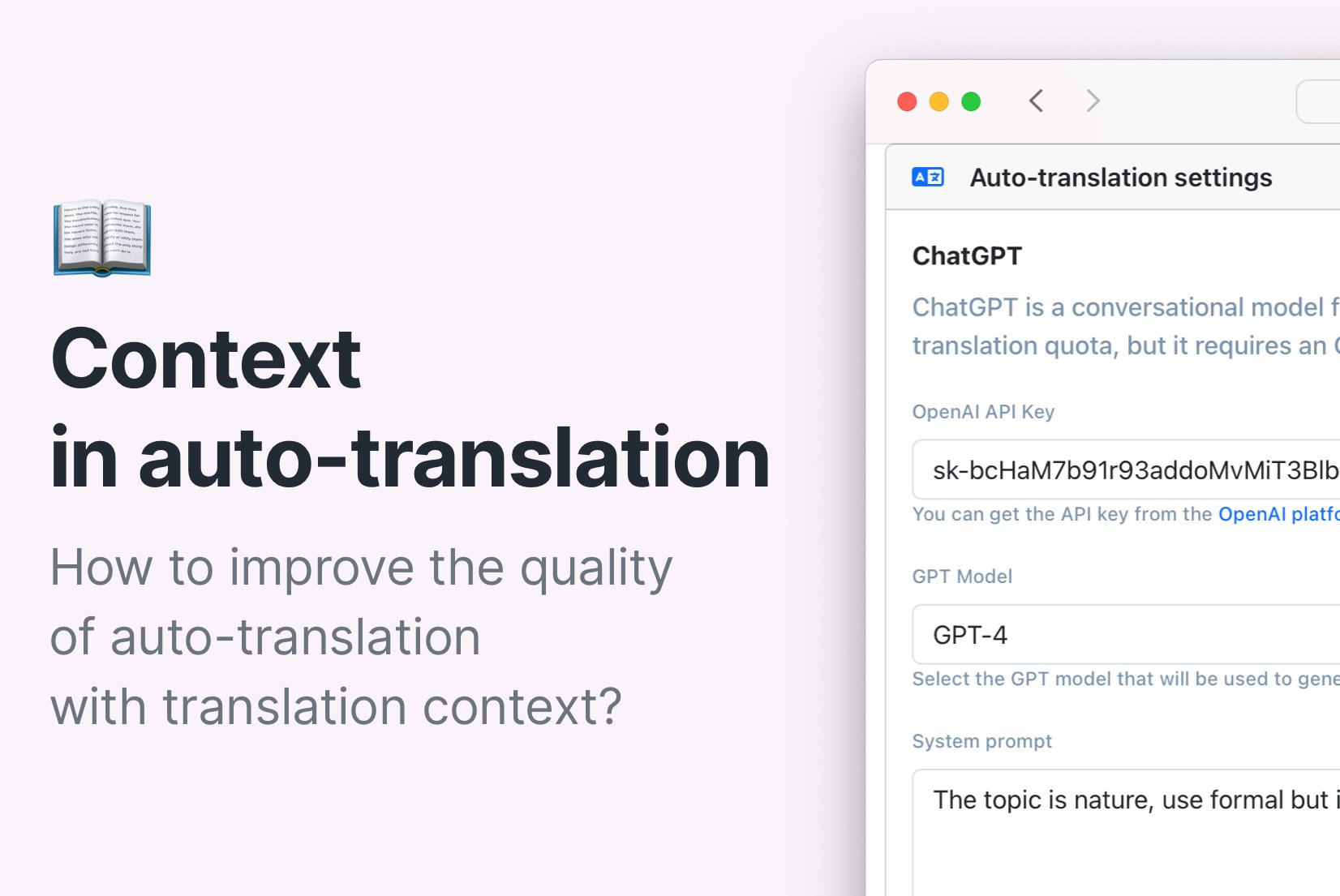
Auto-translation is a powerful tool that can help you translate and localize your content quickly and efficiently. However, it can sometimes be challenging to get the translation just right, especially when dealing with complex or nuanced text. In this article, we'll show you how to use ChatGPT and DeepL translation context to improve the quality of your auto-translations.
Context in auto-translation
When translating text, context is key. Without context, it can be difficult for translation tools to accurately capture the meaning of the original text. This is where ChatGPT and DeepL translation context come in.
Both ChatGPT and DeepL allow you to provide context when translating text. This context can help the translation tools better understand the meaning of the text and produce more accurate translations. By providing context, you can help ensure that your translations are accurate and convey the intended meaning of the original text.
Context can come in many forms, such as:
- The topic of the text, e.g., technology, finance, or healthcare
- The tone of the text (formal or informal)
- The intended audience, e.g., general readers or industry professionals
- The formality of the text, e.g., academic or conversational
- The style of the text, e.g., humorous or serious
- and much more.
Context in auto-translation with ChatGPT and DeepL
ChatGPT, powered by OpenAI, is a language model that can generate human-like text based on the input it receives. When using ChatGPT for auto-translation, you can provide context to help the model generate more accurate translations.
Learn more about ChatGPT and how to use it for auto-translation in SimpleLocalize.
DeepL is a popular machine translation tool that uses artificial intelligence to produce high-quality translations. DeepL supports context in auto-translation, allowing you to provide additional information to help the tool generate more accurate translations.
In SimpleLocalize, you can provide context to ChatGPT and DeepL in two different ways:
Context prompt
You can provide a general context prompt that describes the topic, tone, audience, or style of the text you want to translate. This prompt can help ChatGPT or DeepL generate more accurate translations by providing additional information about the text. This prompt will be applied to all translation keys in your project.
Conext field is available for ChatGPT integration as System prompt and for DeepL as Context.
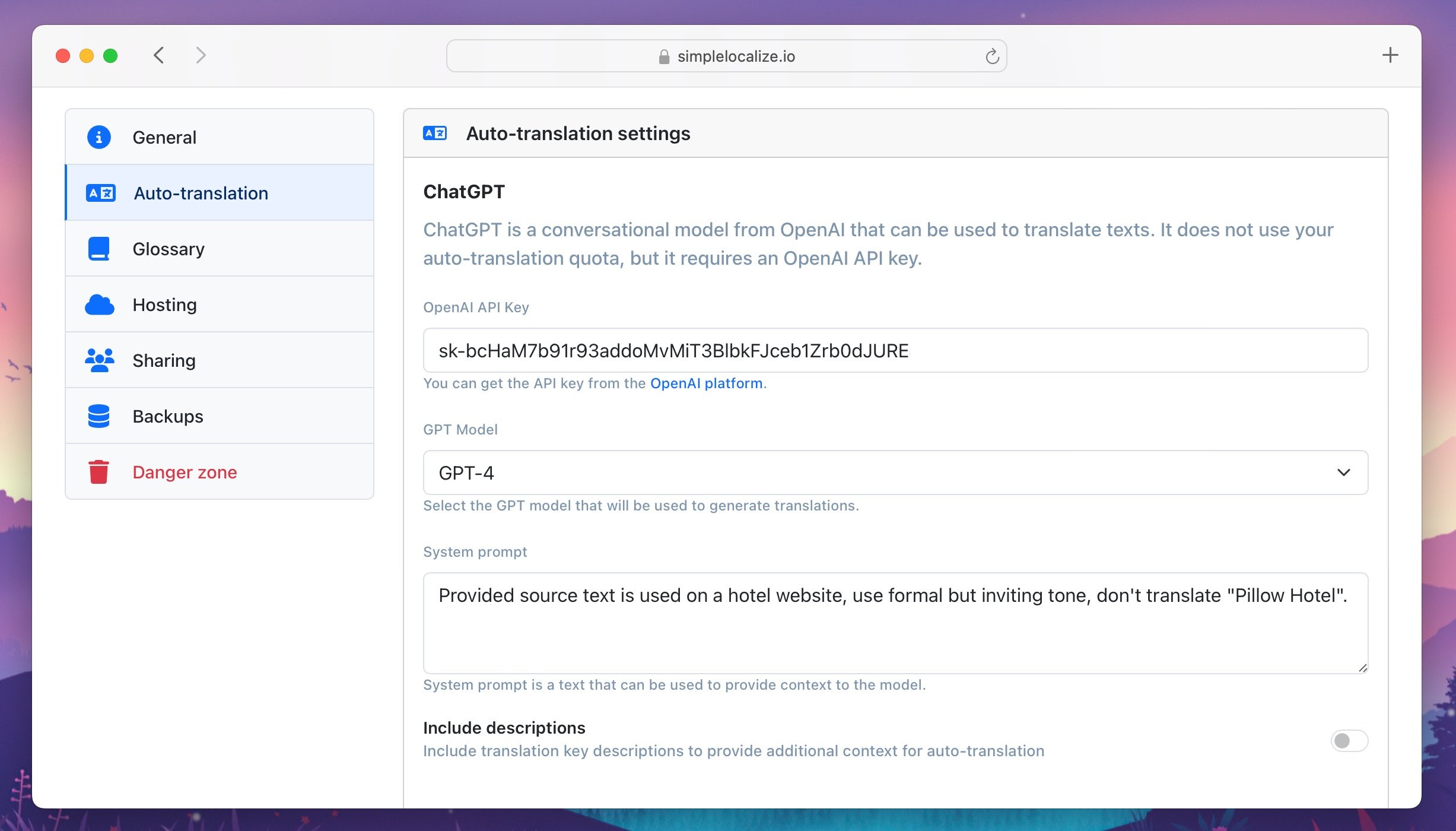
Context per key
You can provide context for each translation key in your project using translation key description from the translation editor. This allows you to provide specific context for each key.
Mark Include descriptions option in ChatGPT or DeepL integration settings to include translation key descriptions as context.
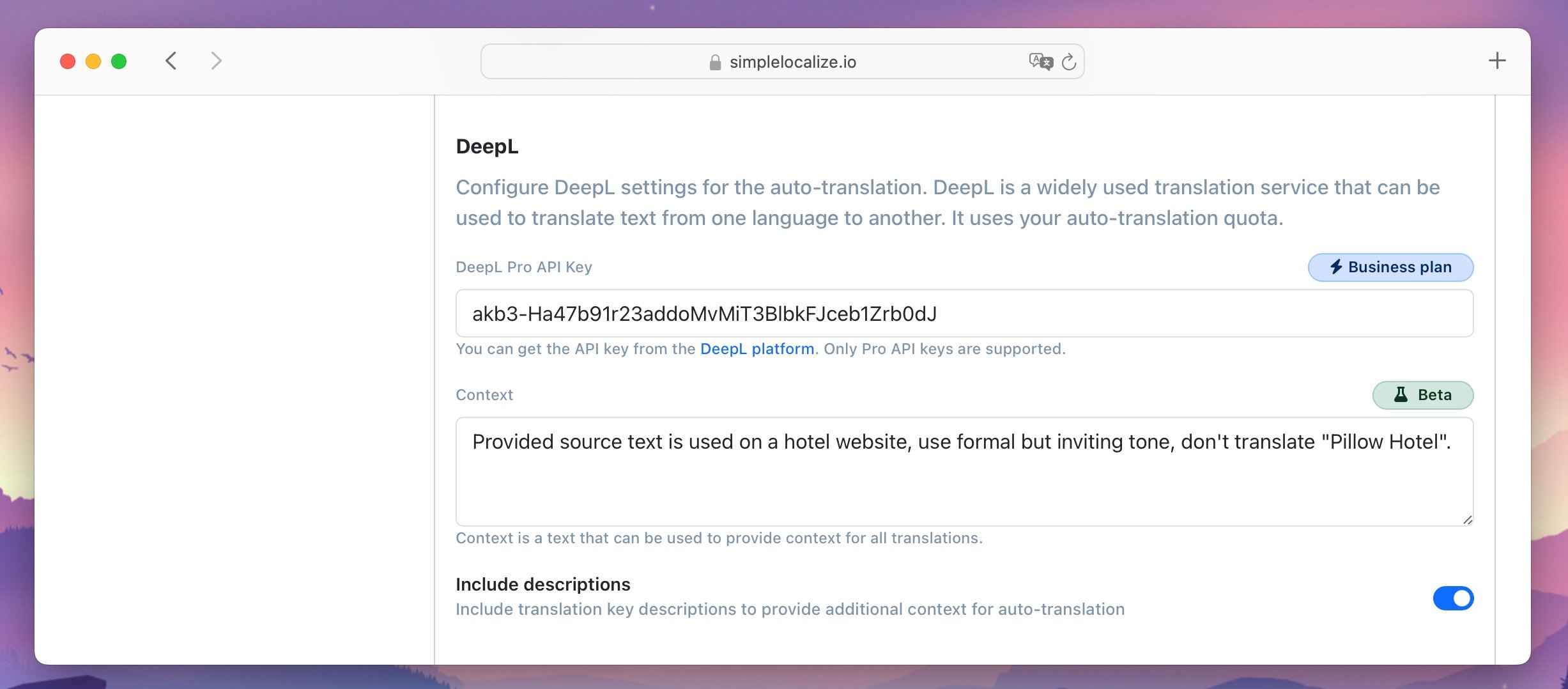
You can use both methods to provide context to ChatGPT or DeepL and improve the quality of your auto-translations.
Additionally, DeepL supports glossaries that can be used to provide context for specific terms or phrases. Learn how to use it during auto-translations.
DeepL context guidelines
When using DeepL for auto-translation, it's essential to follow the guidelines for providing context to ensure the best results. Here are some tips for providing context in DeepL:
- Context should be formed as complete sentences relevant to and descriptive of the source text (2-5 sentences tend to yield the best results).
- Context should be written in the same language as the source text.
- Commands or instructions like "Do not translate this" should not be included in the context (use DeepL glossaries for this purpose).
Examples of context in auto-translation
Adding context to your auto-translations can make a huge difference in the quality of the translations. Let's look at an example to see how context can improve auto-translation.
As an example, let's say we want to translate the word "spirit" from English to Polish. The meaning of the word "spirit" can vary depending on the context. It can refer to a ghostly entity, a person's mood or attitude, or a distilled alcoholic beverage. In our case, let's say we use the word "spirit" in the context of an alcoholic beverage.
Here you can see the difference in translation when providing context:

Another example, the word "bank" can refer to a financial institution or the side of a river. If we try to translate the sentence "Sitting by the bank." without context, the translation tool may not know which meaning of "bank" to use. However, if we provide context that the text is about the bank of the river, the translation tool can generate a more accurate translation.

The context was provided in the form of translation key description for ChatGPT translations.
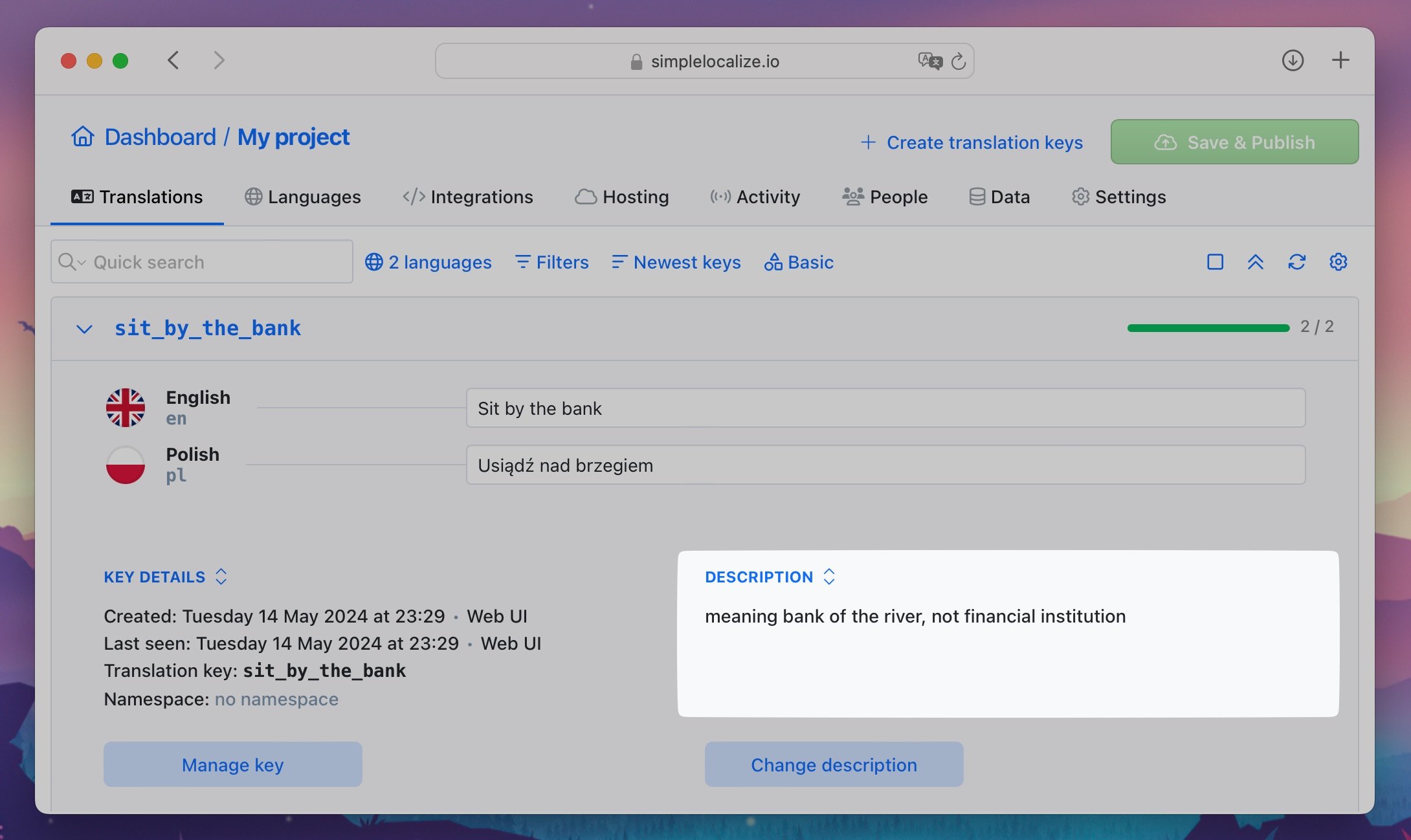
By providing context, you can help ChatGPT or DeepL generate more accurate translations that better capture the meaning of the original text.
Conclusion
Context is essential in auto-translation to help translation tools like ChatGPT or DeepL better understand the meaning of the text and produce more accurate translations. By providing context, you can improve the quality of your auto-translations and ensure that your translations convey the intended meaning of the original text.
Learn more about auto-translation feature in SimpleLocalize and how to use ChatGPT and DeepL for auto-translations in our documentation.

